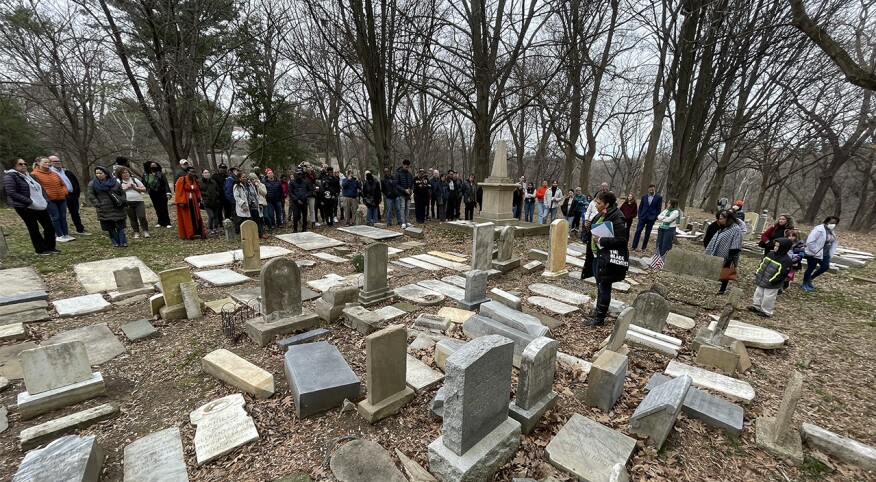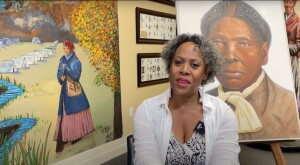When Margott Williams’ grandmother died in 1999, she and her mother drove to Olivewood, a Black cemetery in Houston. Many of Williams’ family members were buried at the cemetery, including her grandfather, great-grandparents, uncles and other relatives.
But the area where Williams and her mother stopped didn’t look like a cemetery. There was so much overgrowth, Williams recalled to AARP. The weeds and brush reminded her of a jungle, she said.
As many as 100 community volunteers help maintain Olivewood’s seven and a half acres during the cemetery’s bimonthly clean-up days.
“My first thought was, ‘Surely, [this] cannot be someone’s last resting place here on this planet.’ It was devastating for me to know that you could look right over the horizon and see the profile of the city of Houston and someone’s last resting place look like that,” said Williams, 60.
In the past few years, there has been increased media attention on preserving and maintaining Black burial grounds. As the nation celebrates the lived experiences of Black Americans during Black History Month, numerous groups and advocates around the country are working to ensure that the history is not erased or disappears.
“This is hallowed ground, and it's our ancestors’ final resting place,” said Renee Ingram, president and founder of the African American Heritage Preservation Foundation, a Washington, D.C.-based nonprofit organization focused on advocating for the preservation of African American historic sites.
Ingram established the foundation after working to preserve her own family’s cemetery, the Stanton Family Cemetery, in Buckingham County, Virginia, in the early 1990s, which was being threatened by highway development. The cemetery, which has 49 grave sites and includes the remains of formerly enslaved people and World War I veterans, was placed on the National Register of Historic Places in 1993.
Like her family’s cemetery, many Black cemeteries are threatened by development and other factors, including environmental issues and climate change.
“Nature takes its course. So you have hurricanes, tornadoes, flooding. You also have the overgrowth — forestation that can take over and create devastation in historic cemeteries over time if they're not well-kept, maintained, and preserved,” Ingram noted.
The Black Cemetery Network, based at the University of South Florida, was created in 2020 to connect those who were working to maintain and preserve Black cemeteries. The BCN archive has a directory of Black cemeteries in the U.S. To date, the site has 145 cemeteries in its archives.
According to the BCN’s website, the organization's mission is to “center Black cemeteries and reclaim lost history through preservation and legislative advocacy.”
It’s a mission focused on bringing dignity and respect to the conversation on Black cemeteries, which Ingram has been working on for over three decades.
“There are so many untold stories about our African-American history and our ancestors that there’s a generation now that has a special interest in preservation and maintaining these particular cemeteries and burial grounds,” said Ingram.
Sisters spoke with three women who are preserving and maintaining Black cemeteries about the significance of their work.
Margot Williams: “I took my brother’s used lawn mower and went out there.”
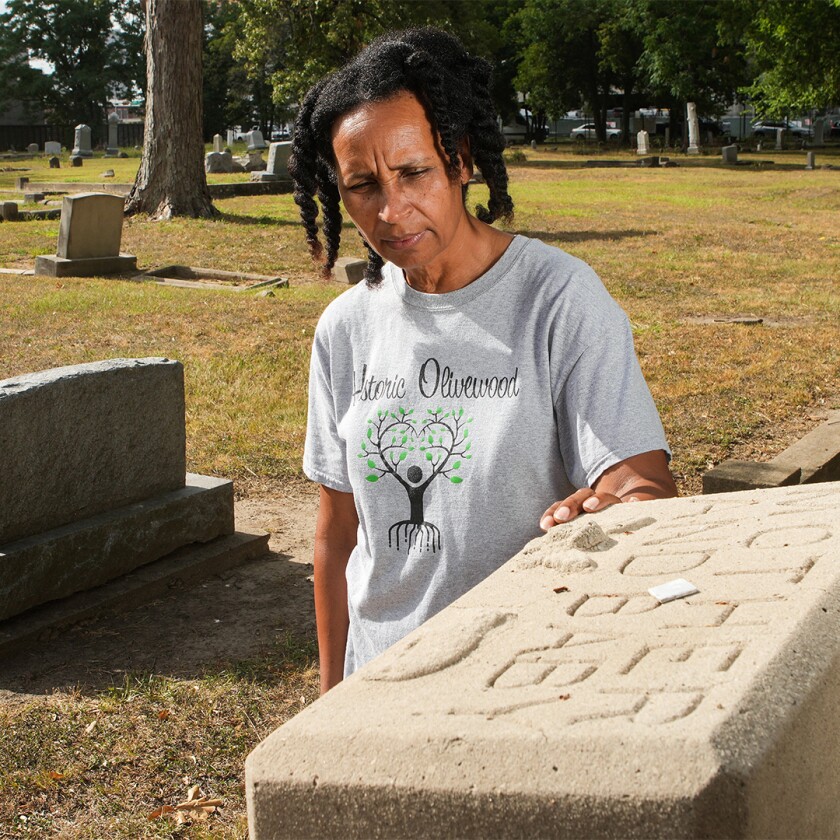
The horrible condition of Olivewood had kept Margott Williams’ family, including her mother, from visiting and paying respects to their family members. So, in 2003, after a conversation with a historian, Williams took it upon herself to clear the cemetery. She went to Olivewood after work and on weekends, sometimes walking the mile and a half from her former home.
“I took my little sickle, I [had] purchased that, and I took my brother’s used lawn mower, and I went out there, and I just started whacking away at weeds and just kind of cutting what I could,” said Williams, who founded the nonprofit Descendants of Olivewood. This organization now maintains the cemetery.
Today, more than 20 years after she whacked weeds on her own, as many as 100 community volunteers help maintain Olivewood’s seven and a half acres during the cemetery’s bimonthly clean-up days. Williams estimates that nearly 4,000 people, including pre-emancipation pioneers, are buried at the site, though it was slated for only 444 graves, she said in an interview with AARP.
The Descendants of Olivewood is building a database of those interred at the cemetery. The organization also works to restore and preserve the grounds that hurricanes and climate change have damaged. Williams considers Olivewood sacred ground and said the people buried at the cemetery helped “weave the fabric” of America, and their contributions are part of American history.
“If you don’t preserve this history, how will our future generations know this information, this important history, the contributions that their people have made?” asked Williams. “It’s important to connect them to their ancestors.”
Lisa Fager: “It saddened me…two cemeteries…separated by a fence.”
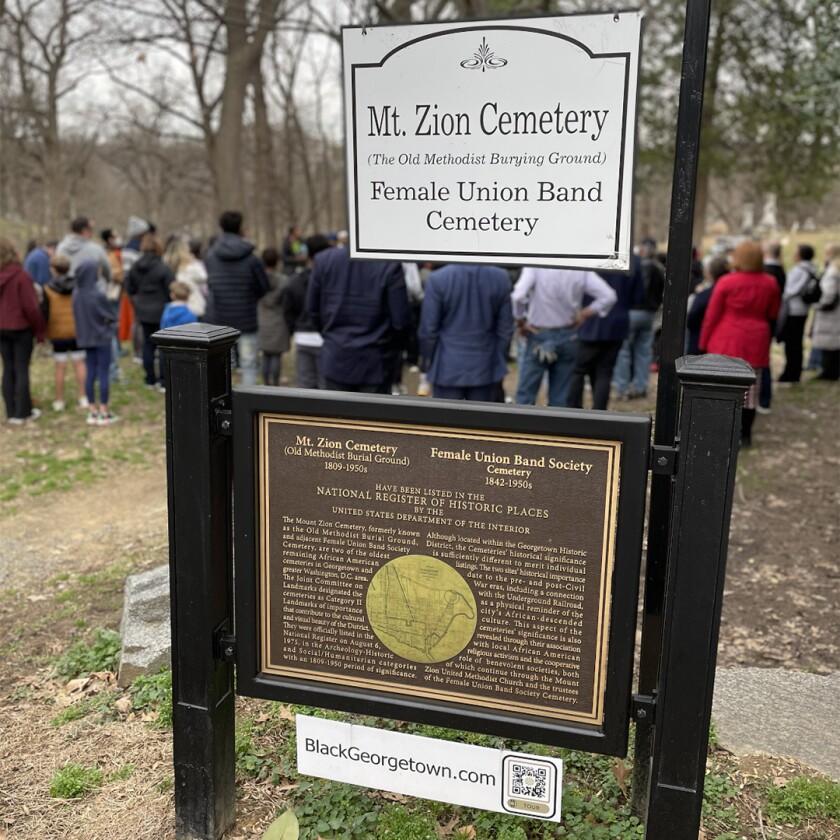
In 2010, Lisa Fager and friends visited Washington, D.C.’s historic Georgetown neighborhood. As they walked through the Oak Hill Cemetery, a well-kept, beautifully landscaped burial ground, Fager peeped through the fence and saw the downtrodden Mount Zion-Female Union Band Society cemeteries that held the remains of a predominantly Black population.
“It saddened me because these two cemeteries, side by side, were separated by a historic road and fence to a white cemetery,” said Fager, the executive director of the Georgetown Foundation, the nonprofit organization for the Mount Zion-Female Union Band Society cemetery. “Two cemeteries. What’s the only difference? The people who were buried there. It’s enough to make you cry because it’s so reflective of life.”
The Mount Zion cemetery was built as a burial ground for the Black and white parishioners of the Mount Zion United Methodist Church, including free and enslaved people. Decades later, a group of free Black women known as the Female Union Band Society bought land for burials next to the Mount Zion cemetery. Shortly after, a whites-only cemetery, Oak Hill, was opened next to the Mount Zion and Female Union Band Society cemeteries. Some white residents whose loved ones were buried in the Mount Zion cemetery moved them to Oak Hill, Fager told AARP.
Over the years, Oak Hill became a well-preserved tourist attraction maintained by the National Park Service. The 22-acre burial grounds were immaculately landscaped, while the primarily Black burial grounds at Mount Zion and the Female Union Band Society were left to deteriorate. In an interview, Fager told AARP that the Black cemeteries were ultimately shut down in 1953 because of the lack of upkeep.
In 2018, Fager was hired to do communications work for the Mount Zion-Female Union Band Society memorial cemeteries. Since then, she’s learned about the amazing people buried in the cemeteries, including free Black masons and Pullman Porters. Her goal, she says, is to “save their sacred burial spaces.”
Fager says most of the eight to 10,000 graves at the Mount Zion-Female Union Band Society cemeteries, listed in the National Historic Register in 1975, do not have markers because of flooding over the years. One of her long-term projects is to address the climate change issue that has impacted the cemeteries.
Ultimately, Fager says, cemeteries aren’t just about knowing when someone was born or when they died, but the “in-between.” She’s working to ensure the “in-between” years of those buried in the Mount Zion-Female Union Band Society cemeteries — how they lived— “don’t get washed away.”
The work of saving these Black cemeteries is important, Fager says because it’s about understanding where we come from.
“I feel so fulfilled every day doing this work, whether saving the land or discovering something about somebody we didn’t know…about. It’s always very much rewarding.
Yamona Pierce: “It had been turned into a dumping ground — trash, debris, car parts.”
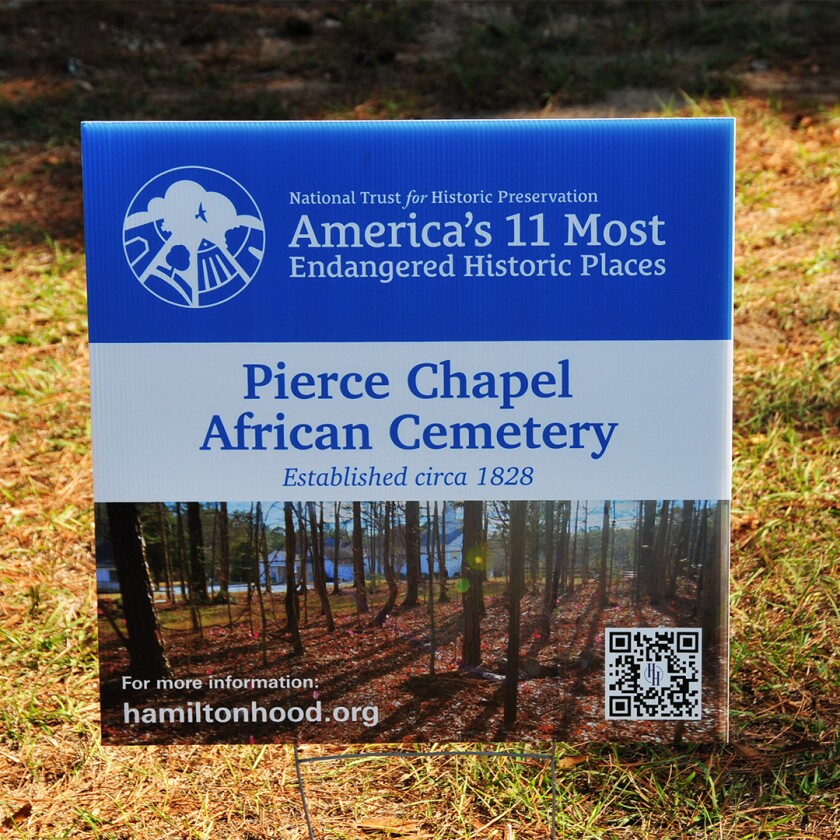
Nearly six years ago, Yamona Pierce and her family, including her two daughters, visited Pierce Chapel African Cemetery in Harris County, Midland, Georgia, a pre-emancipation burial site of enslaved Africans and their descendants. It was also the final resting place of Pierce’s third great-grandparents.
“We wanted to retrace their footsteps, pay our respects and simply learn what we could about this place that we can still visit today that’s significant to my family,” Pierce said in an interview with AARP.
But the cemetery wasn’t quite what the family expected. It looked abandoned, overgrown with trees and weeds, Pierce remembered.
“It had been turned into a dumping ground — trash, debris, busted up broken car auto parts,” said Pierce, 53. “It simply did not reflect the legacy of not just my third great-grandparents, but the legacy of a community of people that were integral to the formation of Harris County, Georgia.”
The experience had such a profound impact on Pierce and her family that they decided to research pre-emancipation cemeteries when they returned home. They learned that many were at risk of being erased or were no longer recorded on county maps because they did not have the funding for perpetual care. A year after they visited the Pierce Chapel African Cemetery, Pierce created the Hamilton Hood Foundation. The organization’s mission is “to inspire and guide others on their journey through the collection, documentation and preservation of historical and culturally significant spaces,” said Pierce, the foundation’s executive director.
There are at least 500 graves at the cemetery, Pierce estimated. The foundation has conducted mapping and archaeological burial plot surveys and employed ground-penetrating radar and drone technology to identify burial areas in the cemetery. It also works with a genealogist who helps with the group’s ancestry.com page. In addition, the Hamilton Hood Foundation built a community of volunteers who work on clearing the cemetery during three “Day of Service” events a year, including one in April for Earth Day, one in May for National Historic Preservation Month and another in the fall. And last year, in 2023, the group hosted its first Juneteenth event.
In her visits to the cemetery, Pierce said she’s come across some of the cultural artifacts of those buried there — from a vase to a ceramic doll to a teacup — items, Pierce said, that can be traced back to West African burial traditions.
Last year, Pierce Chapel African Cemetery was listed on the National Trust for Historic Preservation’s “11 Most Endangered Historic Places for 2023.”
“African American cemeteries are a significant part of the collective American history, and their stories have been largely untold,” Pierce said. “So preserving these places for not just the descendants of those that are laid to rest there, but for the wider community, helps to create a network of information and information sharing where we can learn more about those untold stories of communities that were integral to the founding of this country.”
What you, your family and friends can do
Are you interested in discovering more about Black cemeteries in your area or how to volunteer to preserve and maintain them? Check out the Black Cemetery Network’s archives and events page or the African American Heritage Preservation Foundation’s mobile app, which lists historic sites, including Black cemeteries, that are currently endangered.




